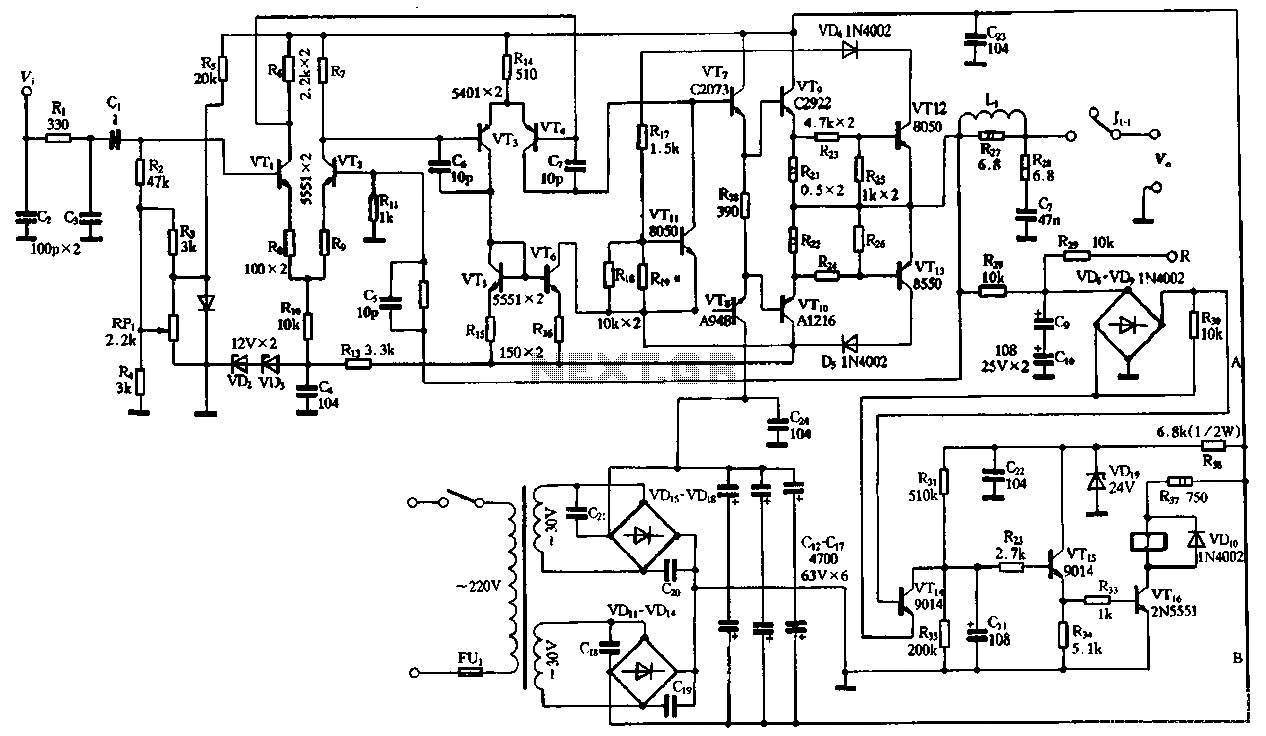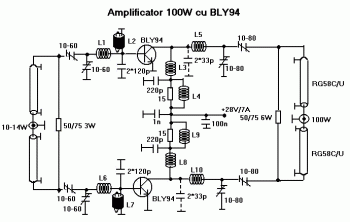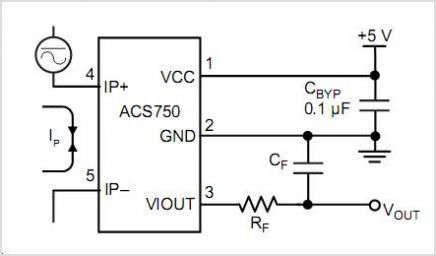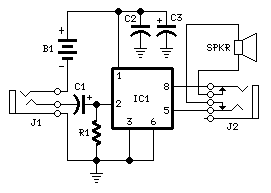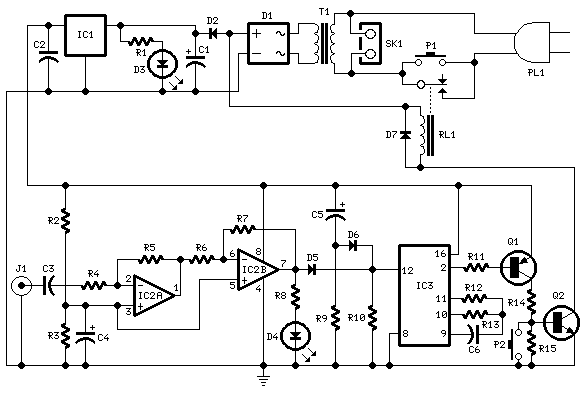
1 Watt Linear RF Amplifier
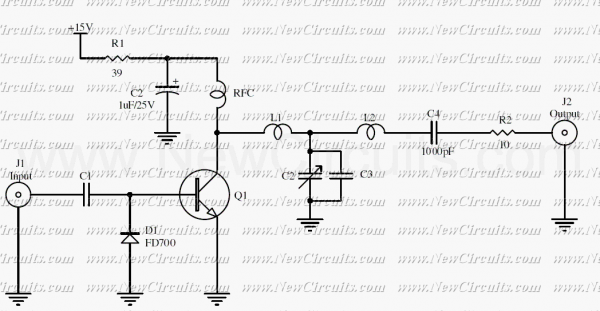
The RF circuit is a C-Class power amplifier. It is used in the last stage of transmitters. Its maximum power output is about 1 Watt. The circuit can be used in 3 frequency ranges: 30-100-200 MHz. More: The P-Out column at the above table has been calculated when P-In (Input Power) is 13 dBm.
The described RF circuit operates as a Class C power amplifier, which is characterized by its high efficiency and is primarily utilized in the final amplification stage of RF transmitters. Class C amplifiers are known for their ability to provide significant output power while consuming less input power, making them ideal for applications where efficiency is critical, such as in RF transmission.
This specific amplifier is designed to deliver a maximum output power of approximately 1 Watt, which is suitable for various RF communication applications. The circuit is capable of operating across three distinct frequency ranges: 30 MHz, 100 MHz, and 200 MHz. This versatility allows the amplifier to be employed in a wide array of RF systems, including amateur radio, wireless communications, and broadcasting.
The input power (P-In) for this amplifier is specified at 13 dBm, which translates to approximately 20 mW. The output power (P-Out) can be calculated based on this input level, and it is crucial to ensure that the amplifier is appropriately matched to the load for optimal performance. The efficiency and output characteristics of the amplifier will vary depending on the specific frequency being used, as well as the design of the matching network and the components employed within the circuit.
In practical applications, careful consideration must be given to the thermal management of the amplifier, as even at 1 Watt output, heat dissipation can become a concern. Adequate heat sinking and possibly active cooling mechanisms may be required to maintain reliable operation and prevent thermal shutdown. Additionally, the design of the input and output matching networks is essential to maximize power transfer and minimize signal distortion, ensuring that the amplifier performs efficiently across the specified frequency ranges.The RF circuit is a C-Class power amplifier . it is used in last stage of transmitters .Its maximum power output is about 1 Watt . the circuit can be used in 3 frequency range 30-100-200MHz. The P-Out column at the above table has been calculated when P-In (Input Power) is 13 dBm. 🔗 External reference
The described RF circuit operates as a Class C power amplifier, which is characterized by its high efficiency and is primarily utilized in the final amplification stage of RF transmitters. Class C amplifiers are known for their ability to provide significant output power while consuming less input power, making them ideal for applications where efficiency is critical, such as in RF transmission.
This specific amplifier is designed to deliver a maximum output power of approximately 1 Watt, which is suitable for various RF communication applications. The circuit is capable of operating across three distinct frequency ranges: 30 MHz, 100 MHz, and 200 MHz. This versatility allows the amplifier to be employed in a wide array of RF systems, including amateur radio, wireless communications, and broadcasting.
The input power (P-In) for this amplifier is specified at 13 dBm, which translates to approximately 20 mW. The output power (P-Out) can be calculated based on this input level, and it is crucial to ensure that the amplifier is appropriately matched to the load for optimal performance. The efficiency and output characteristics of the amplifier will vary depending on the specific frequency being used, as well as the design of the matching network and the components employed within the circuit.
In practical applications, careful consideration must be given to the thermal management of the amplifier, as even at 1 Watt output, heat dissipation can become a concern. Adequate heat sinking and possibly active cooling mechanisms may be required to maintain reliable operation and prevent thermal shutdown. Additionally, the design of the input and output matching networks is essential to maximize power transfer and minimize signal distortion, ensuring that the amplifier performs efficiently across the specified frequency ranges.The RF circuit is a C-Class power amplifier . it is used in last stage of transmitters .Its maximum power output is about 1 Watt . the circuit can be used in 3 frequency range 30-100-200MHz. The P-Out column at the above table has been calculated when P-In (Input Power) is 13 dBm. 🔗 External reference
